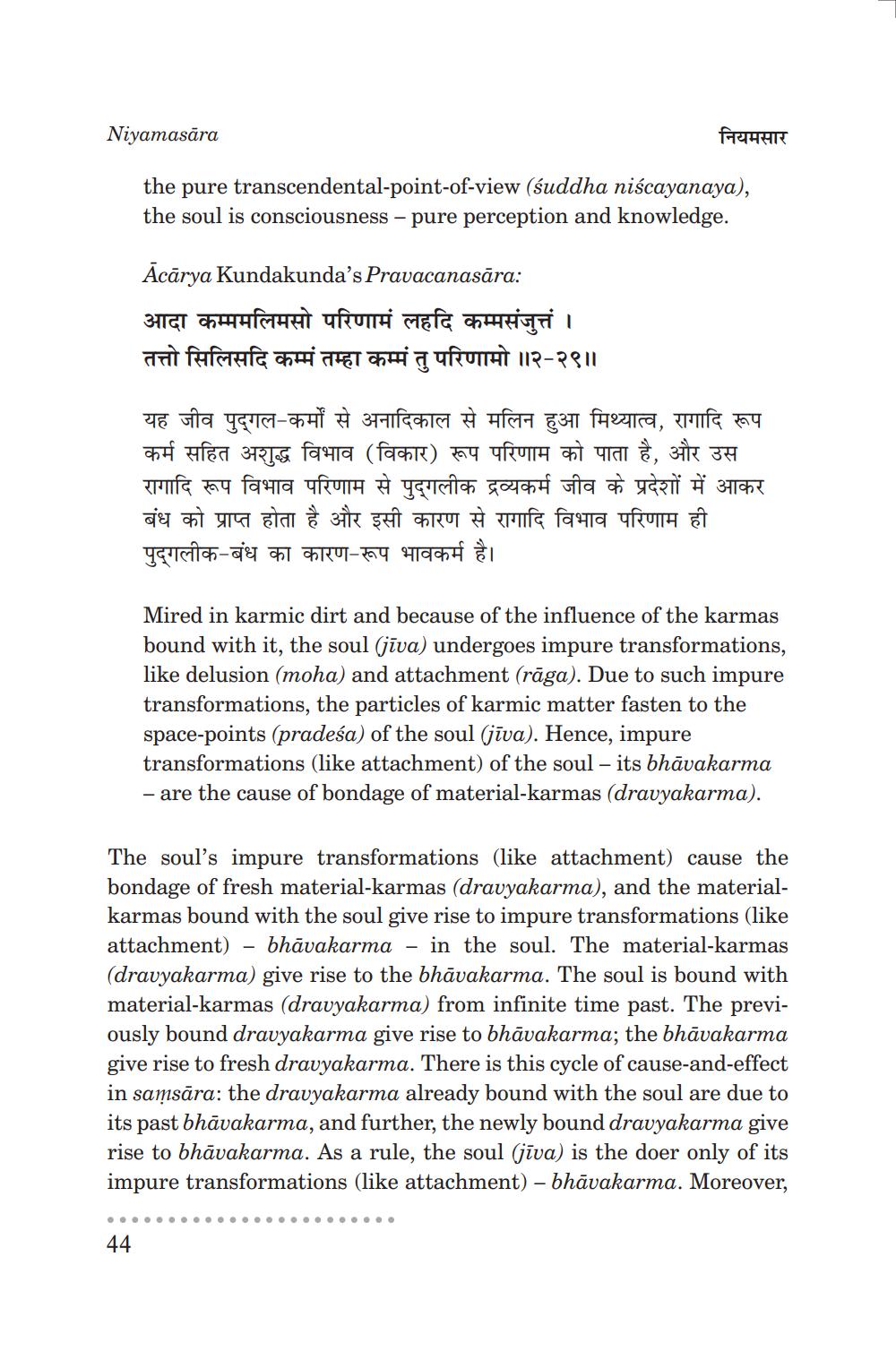________________
Niyamasāra
नियमसार
the pure transcendental-point-of-view (śuddha niscayanaya), the soul is consciousness - pure perception and knowledge.
Acārya Kundakunda'sPravacanasāra: आदा कम्ममलिमसो परिणाम लहदि कम्मसंजुत्तं । तत्तो सिलिसदि कम्मं तम्हा कम्मं तु परिणामो ॥२-२९॥
यह जीव पुद्गल-कर्मों से अनादिकाल से मलिन हुआ मिथ्यात्व, रागादि रूप कर्म सहित अशुद्ध विभाव (विकार) रूप परिणाम को पाता है, और उस रागादि रूप विभाव परिणाम से पुद्गलीक द्रव्यकर्म जीव के प्रदेशों में आकर बंध को प्राप्त होता है और इसी कारण से रागादि विभाव परिणाम ही पुद्गलीक-बंध का कारण-रूप भावकर्म है।
Mired in karmic dirt and because of the influence of the karmas bound with it, the soul (jīva) undergoes impure transformations, like delusion (moha) and attachment (rāga). Due to such impure transformations, the particles of karmic matter fasten to the space-points (pradesa) of the soul (jiva). Hence, impure transformations (like attachment) of the soul - its bhāvakarma - are the cause of bondage of material-karmas (dravyakarma).
The soul's impure transformations (like attachment) cause the bondage of fresh material-karmas (dravyakarma), and the materialkarmas bound with the soul give rise to impure transformations (like attachment) - bhāvakarma - in the soul. The material-karmas (dravyakarma) give rise to the bhāvakarma. The soul is bound with material-karmas (dravyakarma) from infinite time past. The previously bound dravyakarma give rise to bhāvakarma; the bhāvakarma give rise to fresh dravyakarma. There is this cycle of cause-and-effect in samsāra: the dravyakarma already bound with the soul are due to its past bhāvakarma, and further, the newly bound dravyakarma give rise to bhāvakarma. As a rule, the soul (jīva) is the doer only of its impure transformations (like attachment) - bhāvakarma. Moreover,
........................ 44




